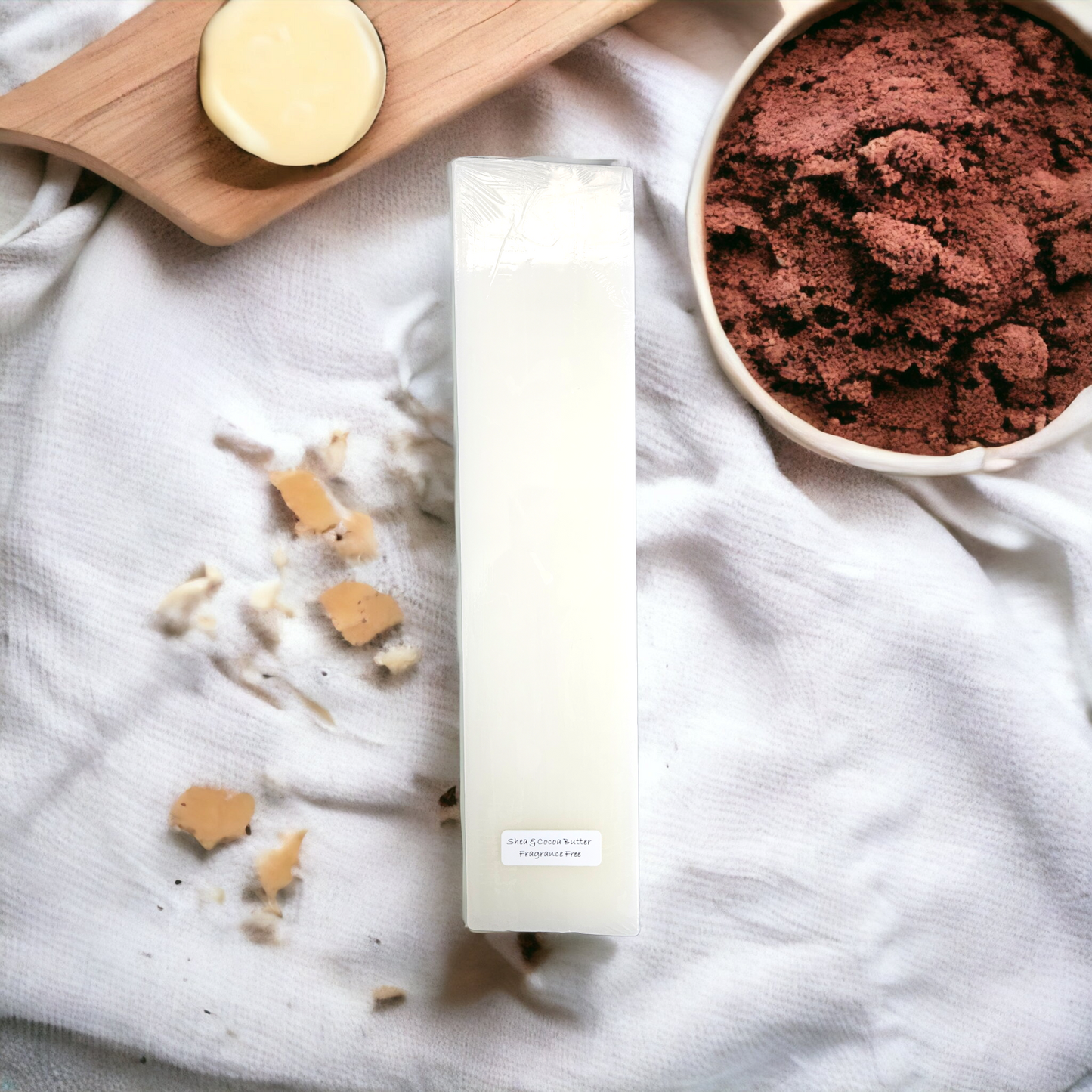Romaqo
White Shea and Cocoa Butter Glycerine Melt and Pour Soap Base 1kg
White Shea and Cocoa Butter Glycerine Melt and Pour Soap Base 1kg
Pre-order item
Soft armchair
$420.00
Select variant
Select purchase option
Couldn't load pickup availability
Shea and Cocoa Butter Glycerine Soap Base – Ready to Use or Customize
This soap base is crafted using only plant-based glycerine, offering a pure, gentle option for both personal use and soap-making projects. It’s free from preservatives, animal products, and harsh chemicals—making it a safe, skin-friendly choice for anyone looking to avoid synthetic ingredients.
Enriched with the nourishing properties of shea butter and cocoa butter, this soap provides deep hydration and a luxurious feel. Shea butter helps moisturize and soften the skin, while cocoa butter helps to improve skin elasticity and protect against dryness. Whether you're a small business owner, hobbyist, or someone who simply wants a trustworthy bar of soap, this base is ready to meet your needs.
You can use it straight out of the package—just cut and use. Or, melt it down and pour it into your favourite moulds for a custom shape. It lathers richly, moisturizes deeply, and rinses clean without residue.
Ingredients
Stearic Acid, Propylene Glycol, Sodium Xylene Sulphonate, Sodium Laureth Sulphate, Palm Kernel Oil, Cane Sugar, Plant Based Glycerine, Aqua, Sodium Hydroxide, Shea Butter, Cocoa Butter
Why You’ll Love It
– Plant glycerine-based
– Preservative-free
– No animal-derived ingredients
– Skin-friendly and pH balanced
– Biodegradable and safe for regular use
– Infused with nourishing shea and cocoa butters for deep hydration
– Great for dry, sensitive, and rough skin
Perfect For
– Soap makers and crafters
– Gift boxes and boutique collections
– DIY beginners and skincare enthusiasts
– Customers with dry, flaky, or sensitive skin
Skin Benefits
– Shea butter deeply moisturizes and softens the skin
– Cocoa butter helps improve skin elasticity and reduces the appearance of scars
– Glycerine helps lock in moisture, keeping skin hydrated and smooth
– Provides relief for dry and irritated skin, promoting a healthy appearance
– Naturally soothing, ideal for all skin types
Instructions
– Step 1: Cut the amount you need based on your mould size.
– Step 2: Melt in a microwave in 10–15 second bursts, or use a double boiler—stir gently.
– Step 3: Pour into a mould. Lightly spray rubbing alcohol to prevent air bubbles.
– Step 4: Let set until firm, remove, and wrap to avoid sweating from air moisture.
Additional Tips
– To estimate how much base you’ll need, fill your mould with water and measure it in millilitres (1ml = 1g).
– Cut your base into small 1x1cm cubes for faster, even melting.
– Avoid overheating to preserve the integrity of the ingredients—don’t boil.
– Wrap finished soap immediately in plastic or shrink wrap to prevent moisture absorption from the air (which can cause glycerine dew).
– Always test your additives or fragrance blends in small batches before scaling up.
Share








